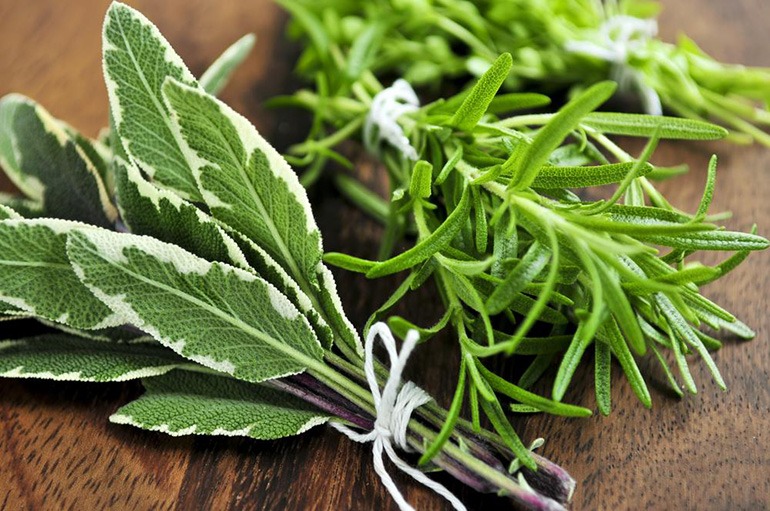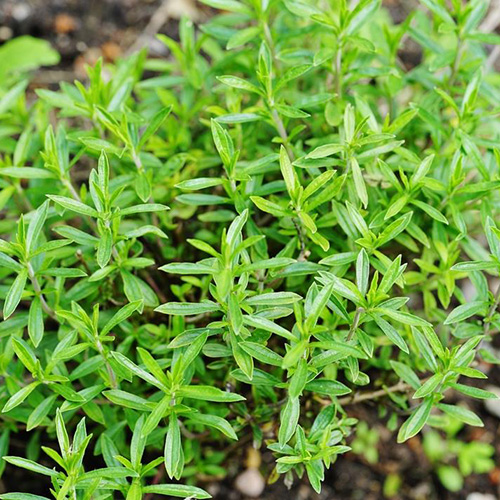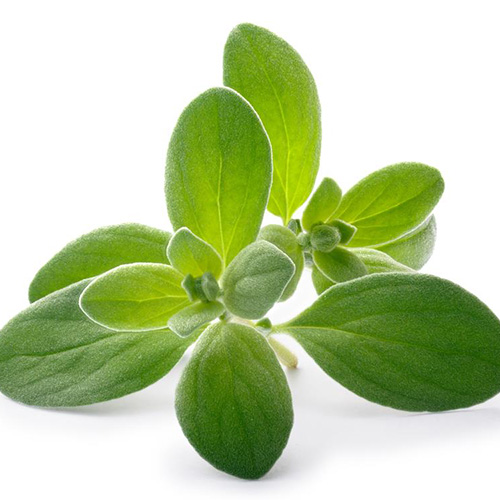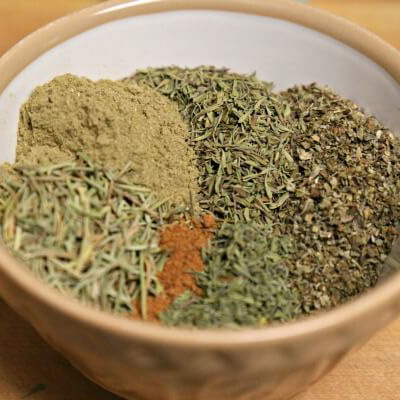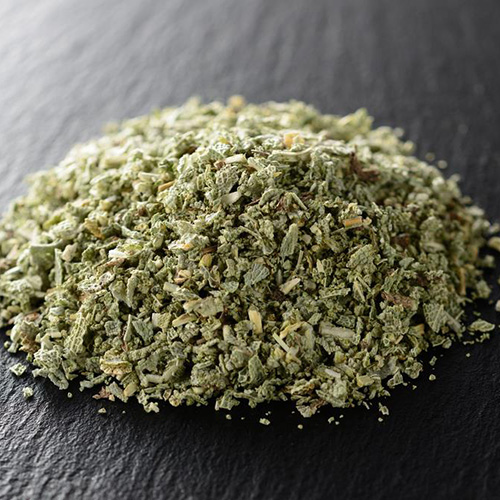Does your recipe call for a pinch of sage, but find yourself in a pinch when you realize you have none? Don’t worry! There’s always thyme to try another spice (pun intended!). I put this list together after my last Thanksgiving. I was out of sage and found myself in a serious bind. If you find yourself in a predicament like mine, I’m here to help. There is more than one substitute for sage that can complement your meal perfectly:
Why is Sage a Great Spice?
Sage comes from the mint family; an herb from an evergreen shrub. When rubbed, sage’s grayish-green leaves adopt a cotton-like, even velvety texture. It’s commonly used to make meats with lamb, pork, and sausages delicious. When chopped finely, Sage does a good job of flavoring pickles, salads, and cheese, making it one of the USA’s most popular herbs.
Although you’ll encounter sage easily at any grocery store, if you’re mid-meal in a recipe that calls for sage, you won’t be able to pause the process and will; you’ll need a suitable substitute.
9 Unexpected Substitutes for Sage
1. Savory can Save the Day.
Both annual summer savory and perennial winter savory make great substitutes for sage. Savory works particularly well in stuffings, sausages and bean dishes. The flavor of savory is much like thyme, only a bit more peppery and a bit stronger. To use savory in lieu of sage, simply use the same amount that the recipe calls for sage.
2. Marjoram Might Be Your Best Bet.
Unlike savory, marjoram is also a member of the mint family. Just like relatives share common characteristics, marjoram and sage share similar flavor profiles. Fresh or dried, marjoram makes a successful substitute. One thing to bear in mind is that marjoram’s flavor diminishes with long cooking. Therefore, marjoram substitutes sage most efficiently when it is added near the end of meal preparation or as a garnish. You can use the same amount of marjoram that the recipe calls for sage.
3. Poultry Seasoning as a Fill-in.
If your cupboard is empty of sage, reach for poultry seasoning instead. This blend of spice frequently used to add flavor to chicken and turkey actually has sage as an ingredient. Along with sage, you’ll find parsley, savory, marjoram, rosemary, onion powder, and thyme. Use the same amount of poultry seasoning as sage called for in the recipe if it’s dry. Use a single teaspoon of poultry seasoning in place of each tablespoon fresh sage.
4. Rosemary instead of Sage.
Rosemary has a bit of a salty taste and tastes like citrus. Even though it’s not as potent as sage, it’s still a good replacement. When sage is called for in-chicken recipes and chicken in general, rosemary substitutes work well. The same goes for pasta dishes.
On a side note, rosemary has an interesting back story. Medieval denizens thought rosemary only grew in in the gardens of the righteous. It was also thought to stave off the plague, causing people to wear rosemary and bring it along wherever they went.
Rosemary tastes amazing in salads, soups, dips, cheese mixes, and sandwiches. Learn more about it here:
5. Substituting one Type of Sage for Another.
Sage can be available fresh, dried or in ground form. If your recipe specifies Sage you don’t have, but you have another type, this might be your best bet.
In its dried, ground form, sage is more pungent, so you’ll need to adjust down. For one tbsp fresh sage, use one tsp of dried sage or ½ tsp of ground sage.
6. Thyme as a Substitute for Sage.
Like sage, thyme has a woodsy flavor and aroma. It’s easy to cook with, but thyme is considered to be more potent than sage. Using thyme in place of sage is very common, loved by chefs around the world.
When you use thyme as a substitute, ensure that it is added early in the cooking process to release the full flavor and extract oils properly – you’ll likely want to use less salt as thyme is powerful. Thyme pairs well with vegetable dishes, pasta sauces, roasted fish, popcorn and grilled meats. If you want to work with fresh thyme, watch this:
7. Basil to take the Place of Sage.
A favorite for those who love pasta and pizza, basil works well in place of sage. Often used in place of oregano or thyme, it’s no surprise that Basil is also a substitute for sage. Basil’s aroma has a bit of a cinnamon scent similar to cloves. It’s this strong anise flavoring that allows basil to substitute for sage’s strong note.
You can use basil as a garnish and to flavor meat, soups, fish or pesto. For risotto dishes, sage is a typical standby, but even with risotto, basil serves as an excellent substitution. Chances are you’ll love basil’s toned down flavor – it offers a smoother profile. And just like sage, basil includes dishes that incorporate lemon, garlic, and tomato.
8. Oregano as a Spicy Substitute.
It also makes sense to use oregano as a substitute for sage. Oregano is a bit bitter and warm, often called “wild marjoram.”
Use a dried version of oregano in place of sage, and you’ll enjoy more of an intense overall flavor. As the herb warms, it releases delicious flavors that craft an enjoyable and robust taste profile. If you can get your hands on some top quality Mediterranean oregano and you can use it in chili, sauces, and pasta.
Be forewarned though – this herb can be a little overpowering if you use the same amount that you would use with sage. Oregano is known for antifungal and antibacterial properties, so you can rest assured that you’ll get good health benefits from this substitution. It’s already long been used as a home remedy for the flu or a cold – lots of people even brew it into tea!
9. Out of Sage? Take a Mint!
While it may sound weird at first, mint is used as a replacement for basil and parsley. Its distinctive leaves have a similar effect on the taste of food. Mint works well both in savory and sweet dishes. The astringent taste of mint is similar to the woodsy pine taste of sage. When you use mint as a substitute for sage, you can give your dishes a lift, brightening them up.
How can you use mint? There’s a variety of ways. It’s a potent herb that’s packed with flavor. Add a little mint to chicken, incorporate it into your sauces, and add a pinch to stew – you’ll see that it complements most dishes.
Conclusion

I don’t know about you, but I love to experiment with food, spices, and substitutions.
Everyone has their favorite recipes, but it’s exciting to spice things up a bit …with different spices! I didn’t experiment much with food substitutions in the past, so running out of sage at Thanksgiving was perhaps the best thing that ever happened to my kitchen. Ever since then, I’ve been an avid scientist, experimenting with spices savory and sweet.
Did you like the article? I hope so! Did I leave anything out?
If you have a great substitute for sage that I haven’t mentioned, leave it in the comments below.
Think you know a foodie who would love this article? Share on social media!

